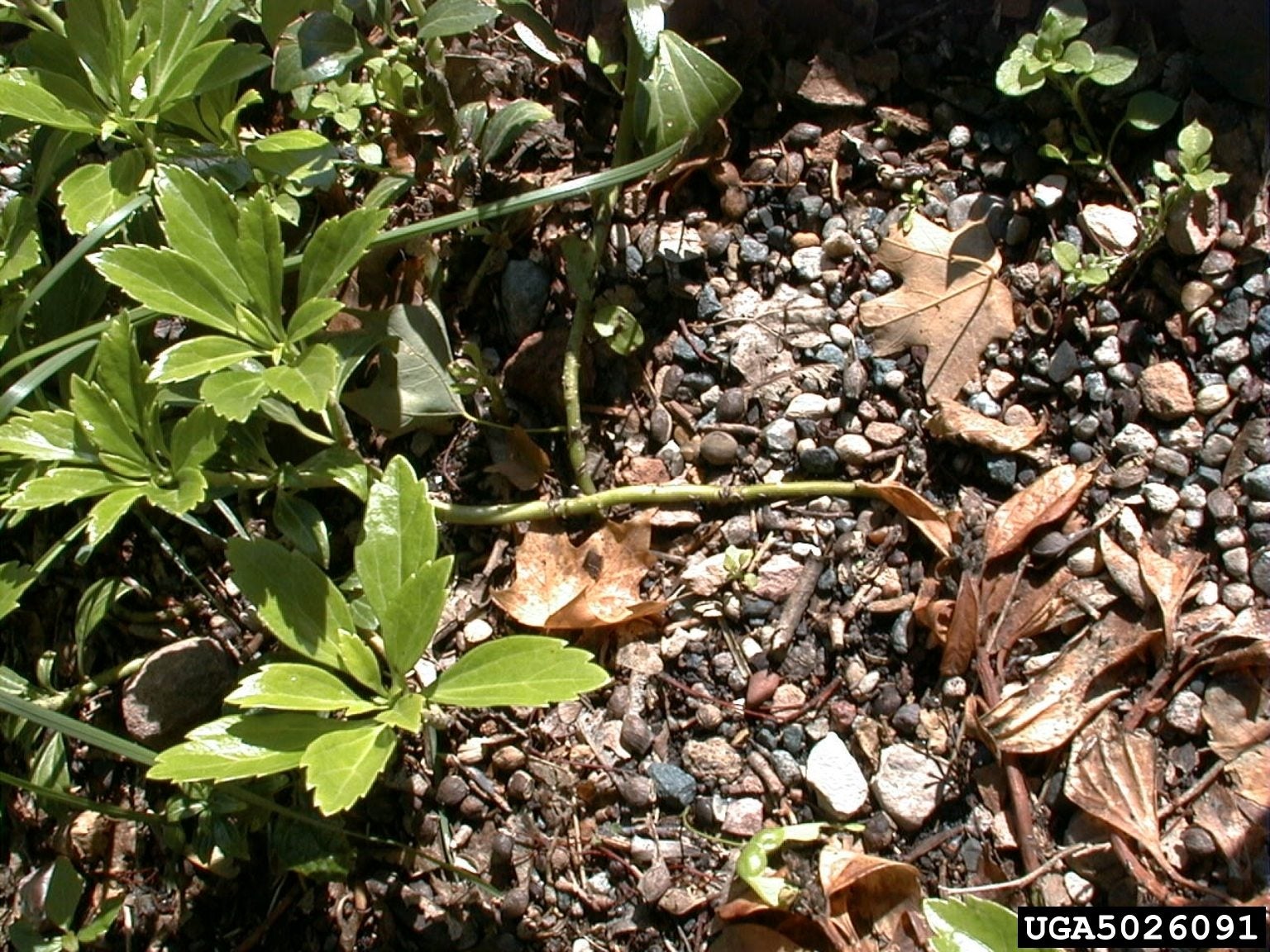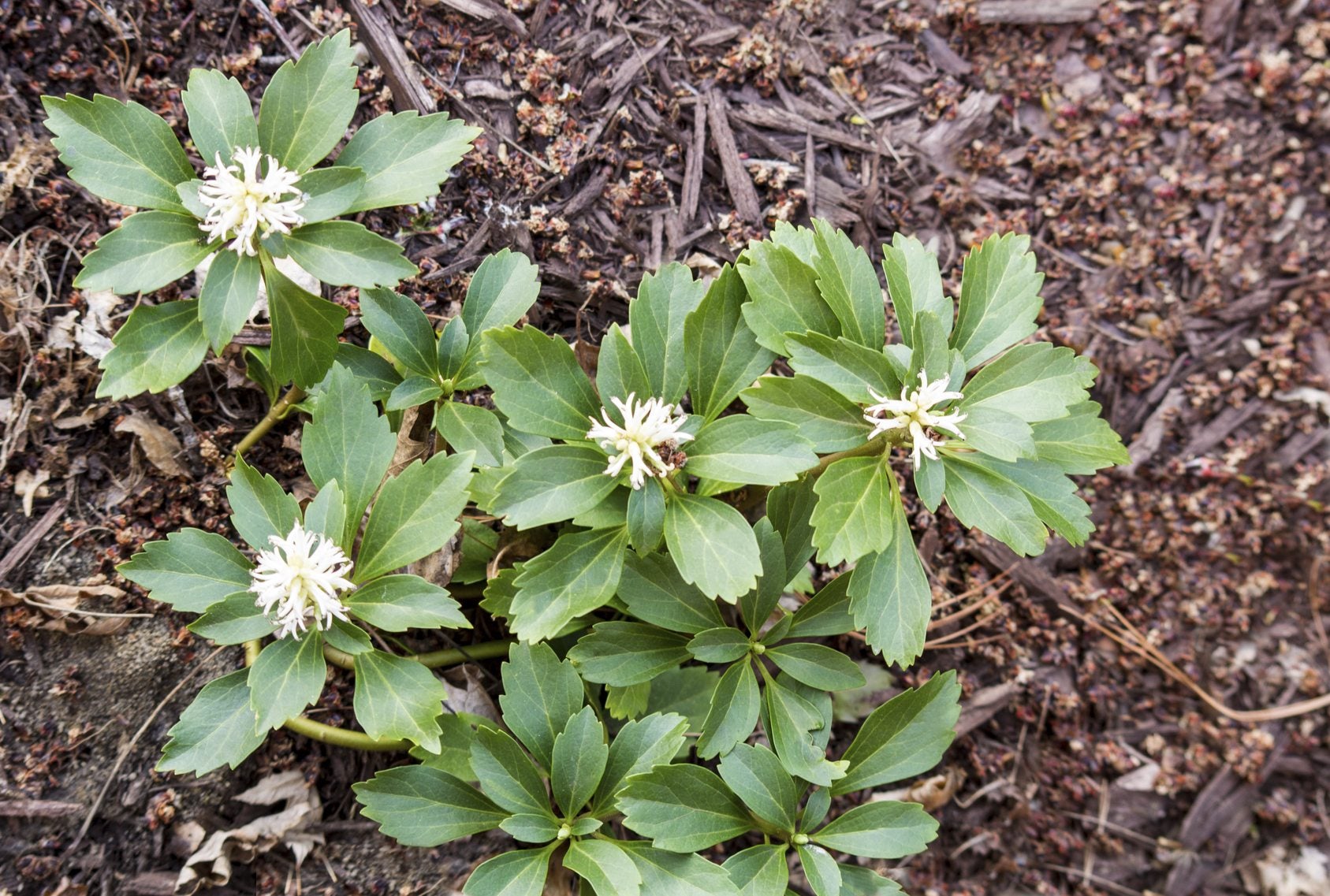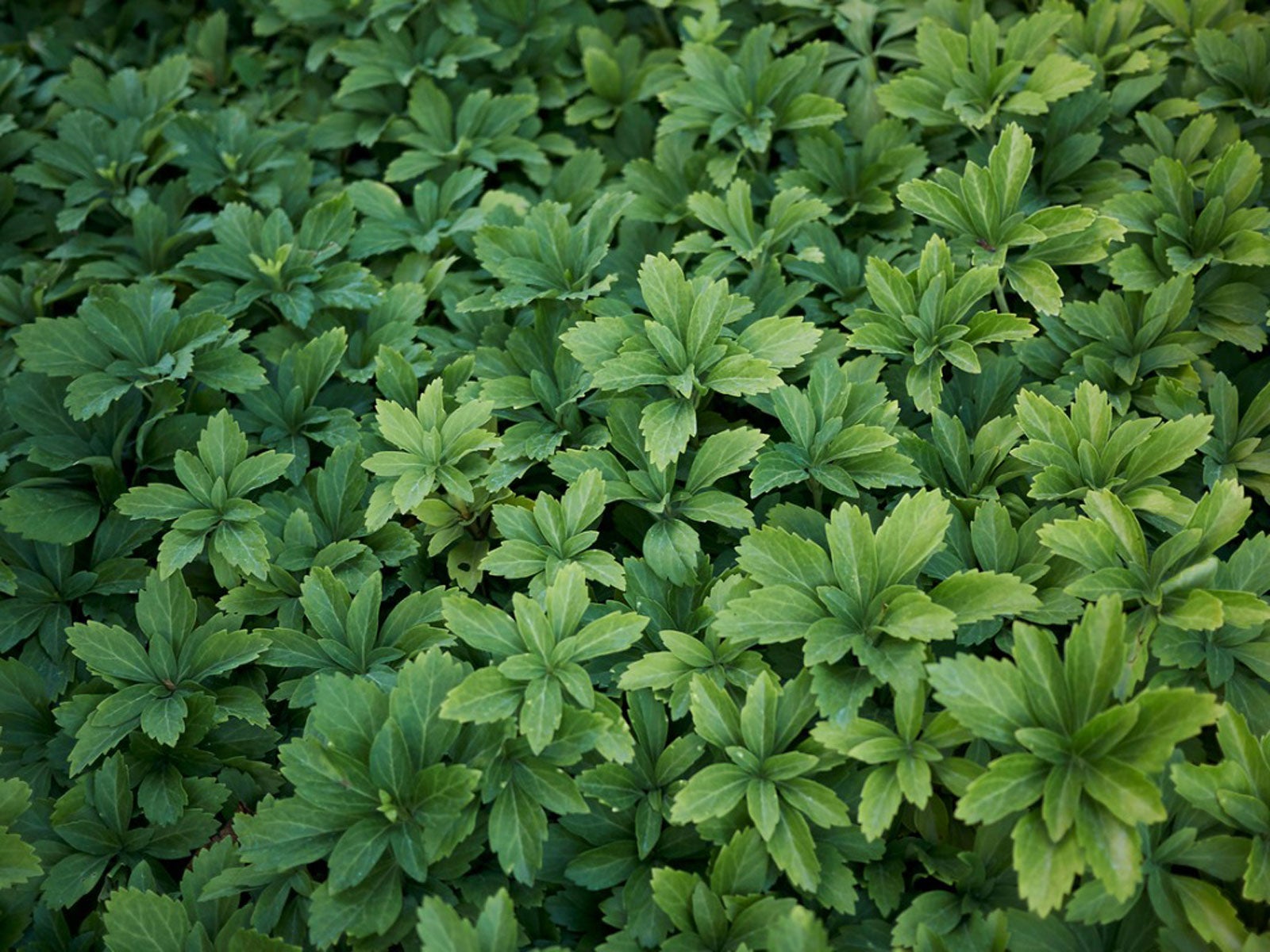Treating Volutella Blight On Pachysandra: What Is Pachysandra Volutella Blight


Japanese pachysandra is a groundcover plant, often used by gardeners in areas too shady to allow grass to grow. When the plant is stressed by too much water on its leaves or too little water to drink, it is prone to certain infectious diseases, including pachysandra Volutella blight (Volutella pachysandrae). Read on for more information about Volutella blight of pachysandra and different kinds of pachysandra leaf blight treatment.
What is Volutella Blight of Pachysandra?
Pachysandra Volutella blight is a type of leaf blight that can be detrimental to pachysandra plants. The first symptoms of this disease are tan spots on the leaves. Although they start small, they grow fast and can cover entire leaves. The pachysandra leaves yellow and die, while the infected twigs darken and die. When Volutella blight of pachysandra attacks plants during moist weather, you can sometimes spot salmon-colored spores on the blackened twigs. Volutella blight of pachysandra is much more likely to attack your plants if they are crowded together. Wet conditions also increase the risk of pachysandra Volutella blight.
Treating Volutella Blight on Pachysandra
While treating Volutella blight on pachysandra is possible, prevention is always easier than cure when it comes to leaf blight fungal diseases. The very best pachysandra leaf blight treatment is good cultural care to prevent infection. If you keep your plants healthy and vigorous, they are much less likely to get leaf blight. Be sure the pachysandra is healthy when you buy them and check the leaves carefully for suspicious tan spots. Where to plant your pachysandra? Select a site that gets some sun. Never plant pachysandra in areas of deep shade, or other spots where the plant is likely to retain water on its leaves for a long time. Don’t compromise on soil; it must be well-draining. Once the plants are established, thin them out during dry periods to prevent densely packed garden beds. It also helps to remove debris from the bed on a regular basis. If, despite your efforts, your pachysandra develops leaf blight, remove and destroy any severely diseased plants. Burn them or bury them to avoid spreading the fungus. If all else fails, consider fungicides. If you decide to use them, start in spring and apply every 7 to 14 days through early summer.
Gardening tips, videos, info and more delivered right to your inbox!
Sign up for the Gardening Know How newsletter today and receive a free copy of our e-book "How to Grow Delicious Tomatoes".

Teo Spengler is a master gardener and a docent at the San Francisco Botanical Garden, where she hosts public tours. She has studied horticulture and written about nature, trees, plants, and gardening for more than two decades. Her extended family includes some 30 houseplants and hundreds of outdoor plants, including 250 trees, which are her main passion. Spengler currently splits her life between San Francisco and the French Basque Country, though she was raised in Alaska, giving her experience of gardening in a range of climates.
-
 Terrifically Tubular Flowers For Hummingbirds: 9 Tube-Flowered Plants To Attract Hummers
Terrifically Tubular Flowers For Hummingbirds: 9 Tube-Flowered Plants To Attract HummersGrowing tubular flowers for hummingbirds helps you create the optimum feeding conditions for your winged friends. Here are nine tubed delights for hummers
By Tonya Barnett
-
 How To Grow Hydroponic Tomatoes For Fresh Indoor Harvests – No Soil Required
How To Grow Hydroponic Tomatoes For Fresh Indoor Harvests – No Soil RequiredLearning how to grow tomatoes in water is easy and allows you to harvest fresh-home-grown produce in every season without any mess.
By Ellen Wells
-
 Pachysandra Weeds: Tips For Removing Pachysandra Ground Cover
Pachysandra Weeds: Tips For Removing Pachysandra Ground CoverPachysandra an evergreen ground cover that looks like a great idea when you plant it. But this aggressive plant doesn?t know when to stop. Read here for information on removing pachysandra ground cover.
By Jackie Carroll
-
 Growing Pachysandra Plants - How To Plant Pachysandra Ground Cover
Growing Pachysandra Plants - How To Plant Pachysandra Ground CoverPachysandra is a favorite ground cover plant in hard-to-plant areas such as under trees, or in shady areas with poor or acidic soil. Read here to find tips for growing pachysandra in your landscape.
By Susan Patterson